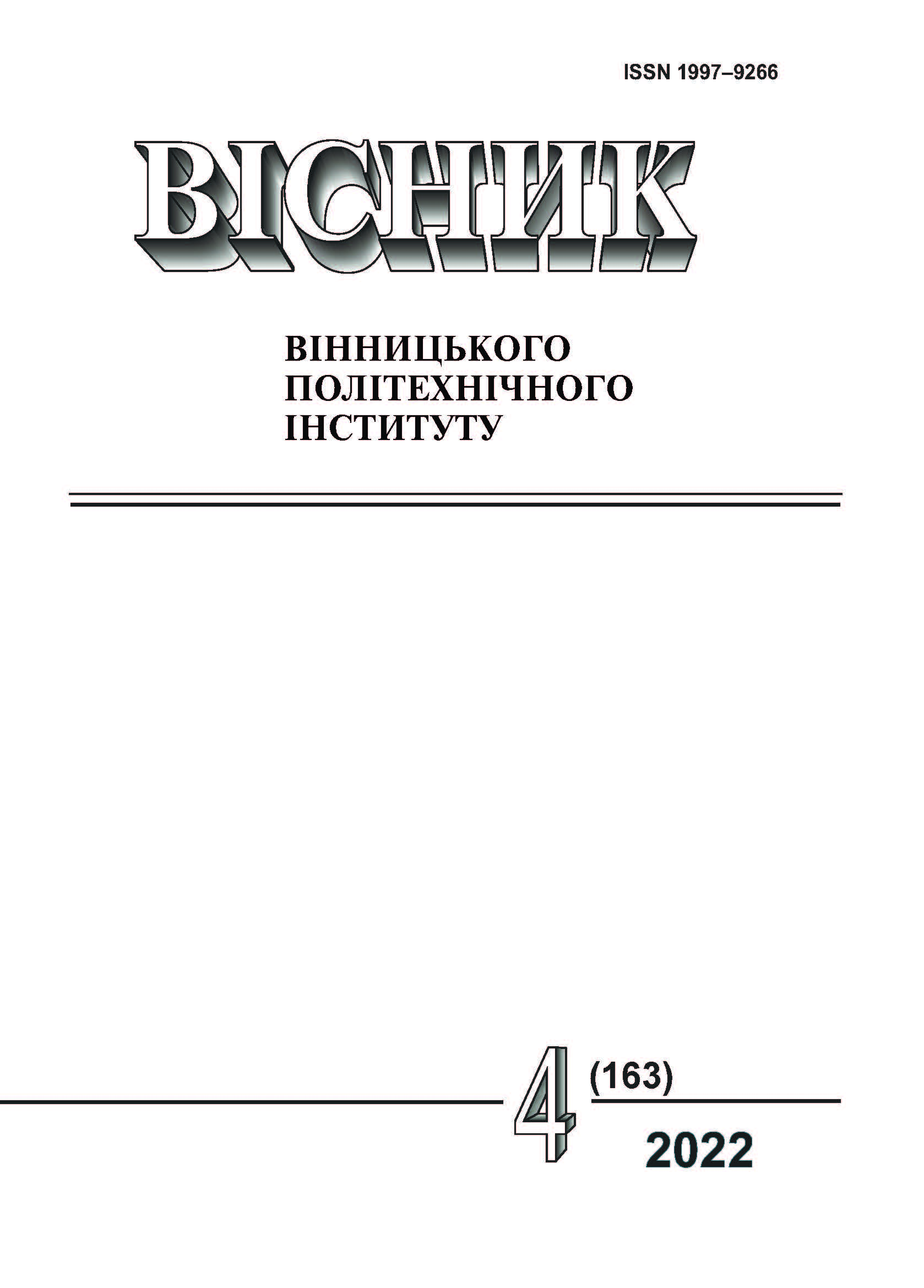Distribution of Current on the Surface of Sheet Metals in Linear Instruments of Magnetic-Pulse Attraction
DOI:
https://doi.org/10.31649/1997-9266-2022-163-4-34-40Keywords:
surface current distribution, inductor system, magnetic flux, equipment for magnetic-pulse metal processingAbstract
An urgent problem in the development of linear instruments of magnetic pulse attraction is to obtain practical recommendations for improving their efficiency, which is largely determined by the processes of current density distribution on the surface of sheet metals that are prone to deformation. The aim of the work is to calculate the characteristics and theoretical analysis of the spatial distribution of current on the metal surface of a flat sheet blank in the working area of a linear tool of magnetic pulse attraction when directly connected to the electrical terminals of a high voltage power source. To achieve this goal, a rigorous mathematical approach is used using the methods of electromagnetic field theory and methods of conformal transformations in the theory of functions of a complex variable. Formulas for numerical estimates are obtained, which quantitatively illustrate the distribution of currents on the surface of the sheet conductor at the contact connection of the power source. Based on numerical and graphical analysis of different geometric dimensions of this model, it is established that the level of current concentration flowing in the selected strip connecting the connection contacts significantly depends on the ratio of the width of this strip and the transverse dimensions of the contact connection. The part of the current that is directly involved in the excitation of force interaction between conductors with parallel currents in accordance with Ampere’s law is determined. The level of transverse current concentration, which flows mainly in the selected band, is ~ 65… 80 % of the total current, which has been confirmed experimentally. The obtained results allow us to conclude that it is necessary to conduct mandatory assessments of the level of concentration of the flowing current in the working area of the linear tool. Using the conclusions of this work will implement new, more efficient tools in pressure treatment technologies, namely, to create viable linear tools for magnetic-pulse attraction of specified areas of sheet metals when directly connected to sources of electric power.
References
V. Psyk, D. Rich, B. I. Kinsley, A. E. Tekkaya, and M. Kleiner, “Electromagnetic Forming – A Review,” Journal of Material Processing Technology, no. 211, pp. 787-829, 2011.
E. Iriondo, M. A. Gutiérrez, B. González, J. L. Alcaraz, and G. S. Daehn, “Electromagnetic impulse calibration of high strength sheet metal structures,” Journal of Materials Processing Technology, no. 211, pp. 909-915, 2011.
A. Jaeger, D. Risch, and A.E. Tekkaya, “Thermo-mechanical processing of aluminum profiles by integrated electromagnetic compression subsequent to hot extrusion,” Journal of Materials Processing Technology, no. 211, pp. 936-943, 2011.
G. Inanan, B. Baranoglu, and E. Aydin, “An Application of High-Power Electromagnetic Pulse: Forming of sheet metal using electromagnetic waves,” in Proc. 9th International Conference on Electrical and Electronics Engineering (ELECO), November 2015, p. 284-288.
J.-Y. Shim, B. Y. Kang, D.-H. Park, and I. S. Kim, “A Fundamental Study on Magnetic Pulse Forming with Bar Forming Coil,” Korean Society of Manufacturing Technology Engineers, vol. 20, no. 3, pp. 292-297, 2011.
G. A. Shneerson, M. I. Dolotenko, and S. I. Krivosheev, Strong and Superstrong Pulsed Magnetic Field Generation. Ber- lin: Walter de Gruyter, 2014.
Y. B. Kudasov, et al., “Metal plate deformation under magnetic field pulse of complex shape,” Journal of Applied Physics, vol. 126, no. 8, pp. 084901, 2019.
H. Altenbach, V. Konkin, D. Lavinsky, O. Morachkovsky, and K. Naumenko, “Deformation analysis of conductive metallic components under the action of electromagnetic fields,” [Verformungsanalyse elektrisch leitender metallischer Bauteile bei Magnetimpulsbearbeitung], Engineering Research [Forschung im Ingenieurwesen], vol. 82, no. 4, pp. 371-377, 2018.
W. Benenson, J. W. Harris, H. Stöcker, and H. Lutz, Handbook of Physics, Switzerland: Springer Nature AG, 2002, 1190 p.
А. Ю. Бондаренко, В. Б. Финкельштейн, и А. А. Степанов, «Экспериментальная апробация электродинамической системы с прямым пропусканием тока для внешней рихтовки автомобильных кузовов,» Електротехніка і електромеханіка, № 4, c. 50-52, 2014.
Ю. В. Батигін, С. О. Шиндерук, О. Ф. Єрьоміна, і Є. О. Чаплигін, «Електромагнітні процеси в плоскій прямокутній системі з індуктором між тонкими котушками біфіляра,» Технічна електродинаміка, № 1, c. 3-9, 2021.
Ю. В. Батыгин, E. A. Чаплыгин, С. А. Шиндерук, «Экспериментальные исследования распределения тока на поверхности листовой заготовки в линейных инструментах магнитно-импульсного притяжения,» Електротехніка і Електромеханіка, № 2, c. 46-51, 2020.
H. J. W. Muller-Kirsten, Electrodynamics, 2nd Edition, World Scientific Publishing Company, 2011, 632 p.
L. Kantorovic, Mathematics for Natural Scientists. Fundamentals and Basics, New York: Springer, 2016, 526 p.
Downloads
-
PDF (Українська)
Downloads: 71
Published
How to Cite
Issue
Section
License

This work is licensed under a Creative Commons Attribution 4.0 International License.
Authors who publish with this journal agree to the following terms:
- Authors retain copyright and grant the journal right of first publication.
- Authors are able to enter into separate, additional contractual arrangements for the non-exclusive distribution of the journal's published version of the work (e.g., post it to an institutional repository or publish it in a book), with an acknowledgment of its initial publication in this journal.
- Authors are permitted and encouraged to post their work online (e.g., in institutional repositories or on their website) prior to and during the submission process, as it can lead to productive exchanges, as well as earlier and greater citation of published work (See The Effect of Open Access).





